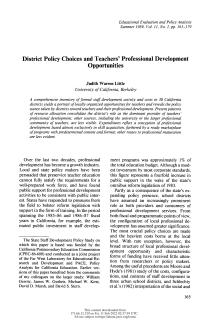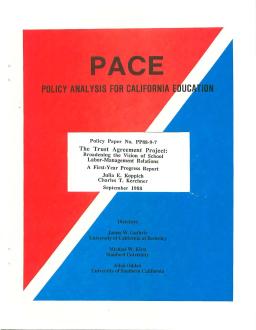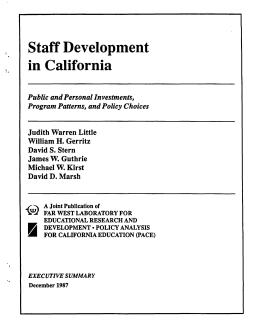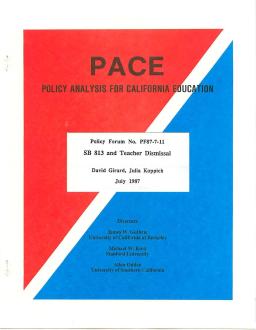Published
Summary
An inventory of 30 California districts reveals their policy stance on teacher professional development, which primarily consists of skill acquisition through district-led programs. Other sources, such as universities or professional communities, are less visible. The districts are the dominant providers of development opportunities, with expenditures reflecting a ready marketplace of predetermined programs. Alternative routes to professional growth are less evident.
Broadening the Vision of School Labor-Management Relations—A First-Year Progress Report
Published
Summary
The Trust Agreement Project aimed to develop new forms of school organization and relationships among teachers and administrators. Six California school districts participated, each selecting an educational policy area for trust agreement development. Trust agreements produced role changes, fostered collaboration, and altered decision-making. These initial results show promise in leaping school districts from the 19th-century industrial model to a more appropriate 21st-century model.
Public and Personal Investments, Program Patterns, and Policy Choices—Executive Summary
Published
Summary
The California Staff Development Policy Study was initiated to assess the possibilities and limitations of staff development in improving classroom teaching and learning. The study aims to answer four questions related to California's investment in staff development, how staff development activities are administered, and how teachers and administrators judge their effectiveness. The study yields eight main conclusions, presented in terms of investment and focusing on improving the capacities and commitments of California's educators.
Published
Summary
In 1985, the Policy Analysis for California Education (PACE) convened a group of attorneys and education policy experts to discuss the effect of Senate Bill 813 on teacher dismissal. They explored varying interpretations of its provisions, contrasted practical experiences with legislative intentions, and outlined recommendations to improve the dismissal process. This summary analysis includes a brief discussion of relevant court rulings and no attempt has been made to update the information since its initial publication.
Published
Summary
This study examines consolidation's impact on student achievement in California. It finds that consolidation leads to improved educational opportunities and cost savings. Consolidation benefits low-income and minority students and has a greater impact in rural areas. Although drawbacks exist, consolidation can be an effective strategy for enhancing education. These findings offer valuable insights for policymakers and education leaders seeking to improve student outcomes in their districts.




